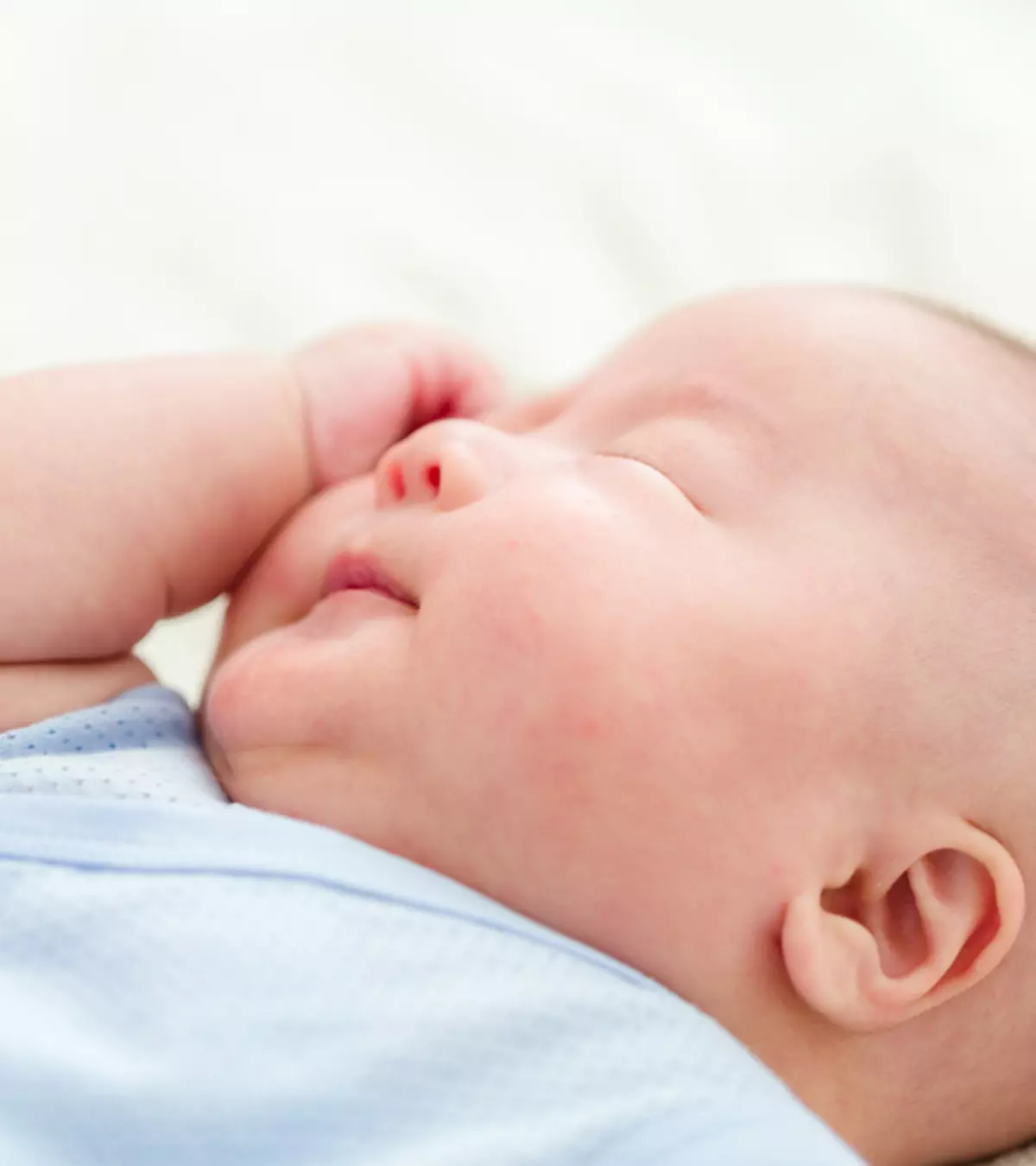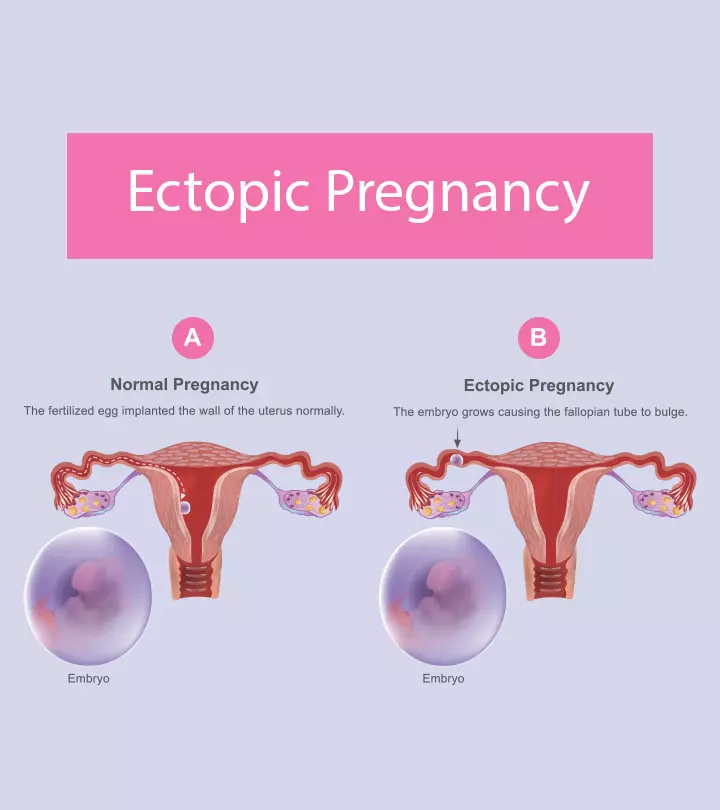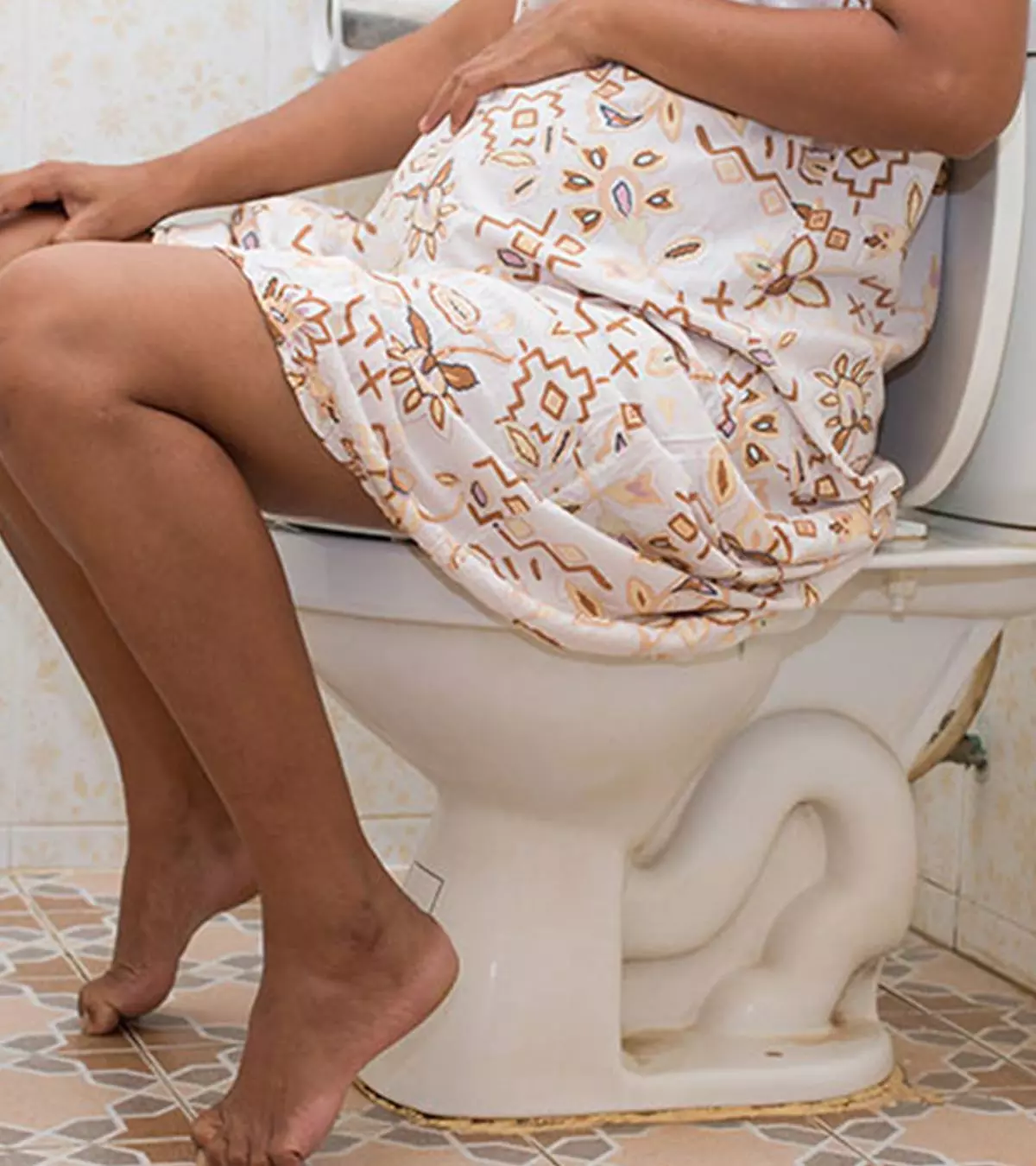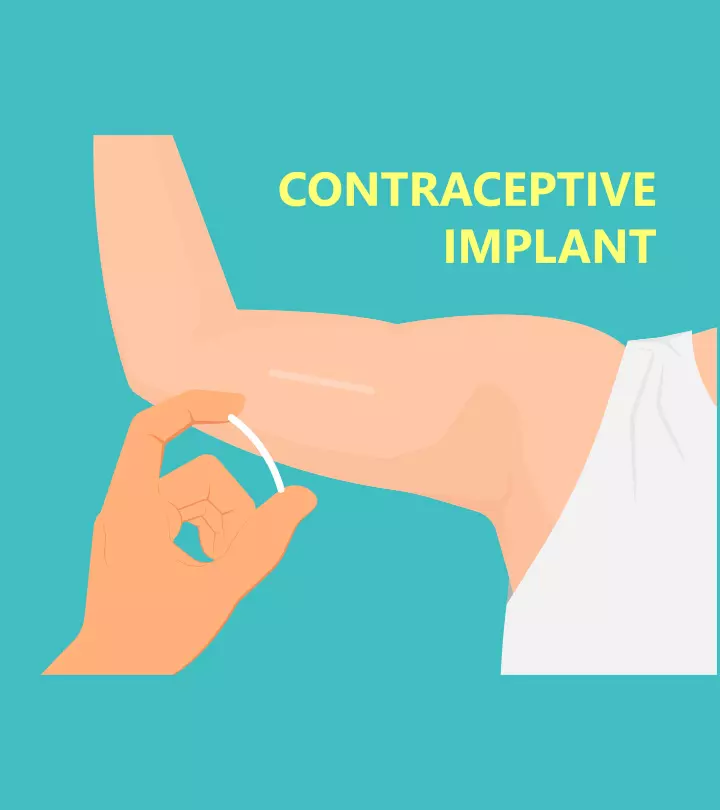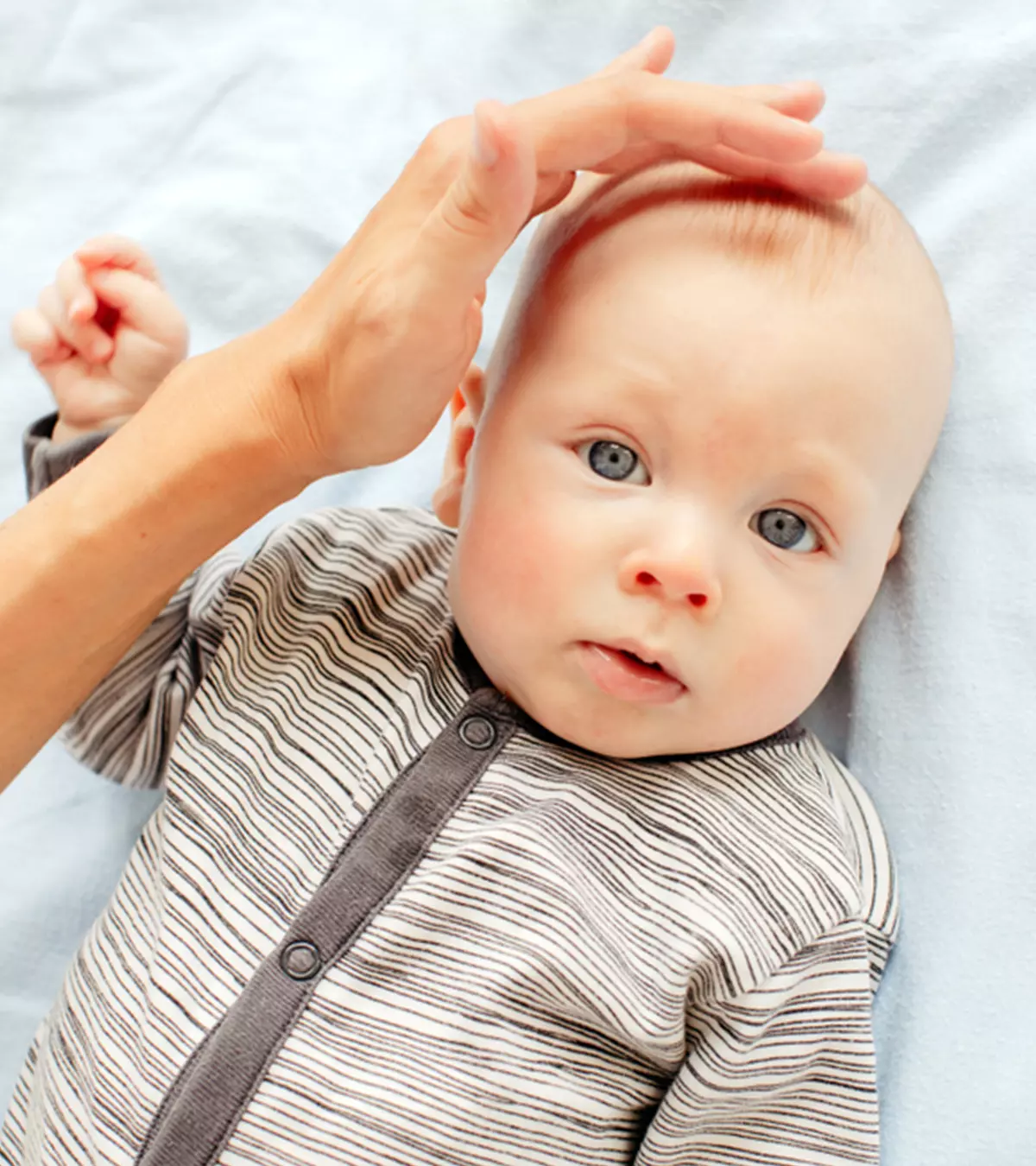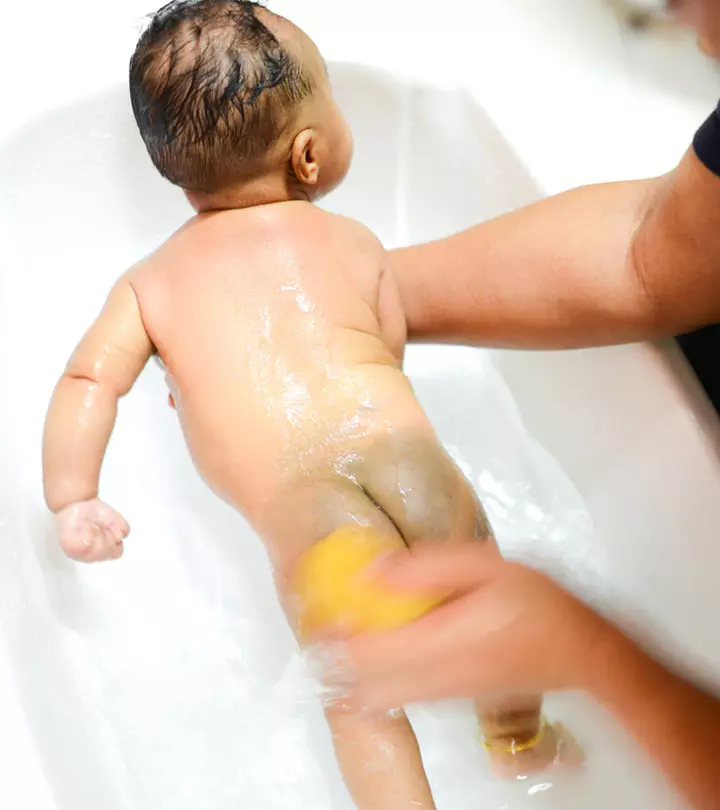
Image: ShutterStock
Mongolian blue spots, also referred to as congenital dermal melanocytosis, slate gray nevus, dermal melanocytosis, or lumbosacral dermal melanocytosis, are a type of birthmarks having a flat, blue or blue-gray appearance. These spots appear at the base of the spine or in the areas of the upper back, buttocks, or shoulders. Some babies may have these spots from birth, while others may develop them a few weeks later. This post explains the various causes, signs and symptoms, diagnosis, treatment methods, and prognosis of Mongolian blue spots in babies.

Key Pointers
- While most Mongolian spots are benign, extensive spots may signify inborn metabolic and vascular pathologies.
- Blue or blue-gray color patches on the back, buttocks, or shoulders of neonates are prevalent.
- If Mongolian blue spots appear as birthmarks, no treatment is necessary.
- If the mark is extensive, a pediatric dermatologist evaluation is advised to rule out any underlying disorders.
What Causes Mongolian Blue Spots In Babies?
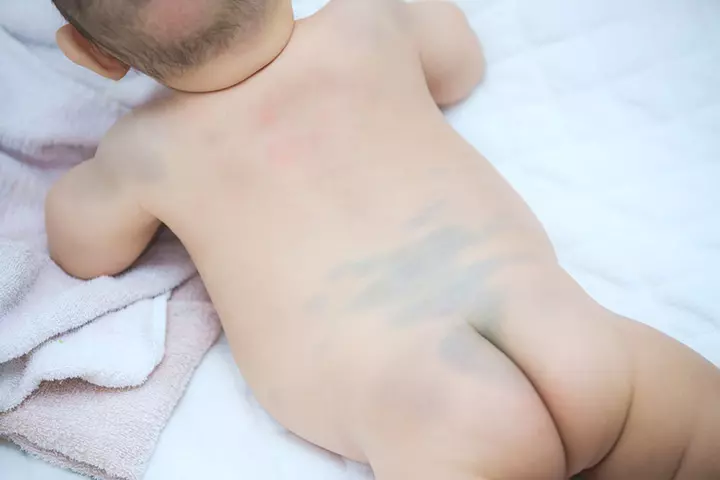
Mongolian blue spots or Mongolian spots appear due to the collection of melanocytesiSpecialized cells that produce the compound melanin, which is responsible for skin, eyes, and hair pigmentation (pigment cells) in the skin’s deep layer. Entrapment of melanocytes in the dermis (deep layer of skin) usually occurs during embryonic development, and they fail to reach the epidermis (superficial layer of the skin). Melanocytes make skin pigment called melanin. Thus, the accumulation of these cells could result in the development of bluish or bluish-gray skin pigmentations or marks, known as Mongolian blue spots, on the newborn skin (1).
Extensive spots might indicate inborn errors of metabolism and vascular pathologiesiDiseases affecting blood vessels, including arteries, veins, and capillaries (2). However, in most cases, Mongolian spots are benign.
The birthmark tends to be more common in people with Asian, Native American, Hispanic, East Indian, and African ethnicities. It was originally believed to have been present only in those of Mongolian descent, hence the name.
 Did you know?
Did you know?How Do Mongolian Blue Spots Look?
Mongolian blue spots are not painful and do not cause any serious symptoms for the babies. Parents may notice the following features of Mongolian blue spots (3).
- Blue or blue-gray spots that commonly appear on the back, buttock, or shoulders
- The spot may appear flat with an unclear border and irregular shape
- Non-blanching (do not fade under pressure)
- The texture of the surrounding skin would be normal
The birthmark may also appear on the face, limbs, or any other part of the body and is called Ectopic Mongolian Spots.
In rare cases, it can be mistaken for bruises that may arise due to trauma or child abuse.
Mongolian blue spots may sometimes cover large areas of the skin. However, these spots are not cancerous and are mostly benign birthmarks in babies. There won’t be any changes in the skin other than the color of the birthmark.
How Are Mongolian Blue Spots Diagnosed?

Doctors can diagnose Mongolian blue spots by observing the newborn’s skin. The pediatrician usually evaluates all types of birthmarks during the routine newborn examination. Pediatricians may check the size, color, and location of the spots during the exam. There is no test required to diagnose Mongolian blue spots. In rare cases, healthcare professionals may order some tests if they suspect any underlying dermatological conditions.
 Research finds
Research findsWhat Are The Treatment Options For Mongolian Blue Spots?
Mongolian blue spots do not require treatment if they are normal birthmarks.
However, if testing reveals other underlying conditions causing skin discoloration, the doctor may design a treatment option that is suitable to address that condition. You may discuss with a pediatrician for the individual treatment plan.
Addressing potential treatment options for Mongolian spots in her blog, dermatologist Dr. Lynn Chiam states, “The pigmentation normally lightens as the child grows up. However, in some cases, it may persist into adulthood. Mongolian spots can be lightened by the use of a laser. The laser therapy is safe and well-tolerated. Again, many sessions may be required for good cosmetic outcome (i).”
 Quick tip
Quick tipWhat Is the Prognosis Of Mongolian Blue Spots?
In many cases, the normal birthmarks may fade away by age four or during teenage. However, more extensive and persistent melanocytosis may tend to stay for several years or a lifetime. According to a report by The Royal Children’s Hospital Melbourne, Mongolian spots persist into adulthood in less than three percent of cases, mostly appearing in areas other than the spine and buttocks (5). It’s important for parents to watch for any changes and talk to a pediatrician if other symptoms appear.
When To Seek Medical Advice
Mongolian blue spots are a normal occurrence in newborns and infants and typically fade within the first few years. Though rarely a concern, seek medical advice if (5) (6):
- You are unsure about the type of birthmark
- You suspect an external injury or abuse
- You notice that the spots are too large
- The spots seem to be growing in size over time
- They appear in unusual areas, such as near the mouth or face
- They interfere with the baby’s movements or daily activities
Frequently Asked Questions
1. Can Caucasian babies have Mongolian spots?
Research studies reveal that Mongolian spots are not very common in Caucasian babies. Furthermore, the prevalence of these spots is just 10%, compared to about 90% in the Asian infant population (2).
2. Are Mongolian blue spots in newborn babies linked to genetic disorders?
No. Mongolian spots in newborns are not linked to any genetic disorders or conditions. Instead, these spots are considered a normal and common skin variation observed in individuals with darker skin tones.
3. Why are these birthmarks called Mongolian spots?
Mongolian spots got their name from German professor Edwin Baelz, who first observed them in Mongolians and believed they commonly occurred among Mongolian and non-Caucasian ethnicities. Another theory suggests that a genetic mutation thousands of years ago led to their appearance in Mongolians, linking them historically to their ancestors (7).
Mongolian blue spots are not a sign of any disease. Instead, they are blue-gray spots or pigmented birthmarks that appear due to the collection of melanocytes in the deeper layers of the skin. Although these spots are not a cause for concern, it is advised to consult with the doctor for the proper diagnosis of the cause of the spots. In addition, one should remember that these spots are not a sign of skin cancer and do not cause any pain. But, in case your baby experiences pain and other symptoms, consult the doctor promptly.
Infographic: What Other Conditions Can Cause Gray-Blue Skin Lesions In Babies?
Gray-blue skin lesions can also be seen in other health conditions in babies. Mistaking them for Mongolian blue spots and not seeking timely treatment may worsen specific underlying causes. Go through the infographic to learn about the common medical conditions in babies causing gray-blue skin lesions.
Some thing wrong with infographic shortcode. please verify shortcode syntax
Learn from this video about Congenital Dermal Melanosis, also known as Mongolian Spots. Discover what causes them and how they can be treated.
Personal Experience: Source
MomJunction articles include first-hand experiences to provide you with better insights through real-life narratives. Here are the sources of personal accounts referenced in this article.
i. Mongolian Spots;https://drlynnchiam.wordpress.com/2012/10/08/mongolian-spots/
References
1. Mongolian Blue Spots; Icahn School Of Medicine, Mount Sinai
2. Divya Gupta and Devinder Mohan Thappa, Mongolian spots: How important are they?; World Journal of Clinical Cases; NCBI
3. Lumbosacral Dermal Melanosis; DermNet NZ
4. Mongolian Spot; American Osteopathic College of Dermatology
5. Congenital dermal melanocytosis; The Royal Children’s Hospital Melbourne
6. Birthmarks in Infants; Johns Hopkins Medicine
7. Divya Gupta and Devinder Mohan Thappa; (2013); Mongolian spots; Indian Journal of Dermatology, Venereology and Leprology
Community Experiences
Join the conversation and become a part of our nurturing community! Share your stories, experiences, and insights to connect with fellow parents.
Read full bio of Maria Carmela Villania-Mamauag
Read full bio of Dr Bisny T. Joseph
Read full bio of Rohit Garoo
Read full bio of Shinta Liz Sunny

 Quick fact
Quick fact





